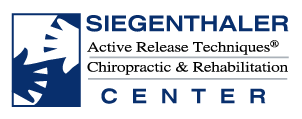The Techniques Behind Active Release Therapy
By JEN MURPHY Active release technique, also known as ART, is a combination of movement and massage to treat pain in ligaments, nerves, tendons, muscles, and other connective tissue in the body, according to practitioners. Some people admit it can be painful. “This is quite different from a massage,” says Jessica Tranchina, an Austin, Texas-based ART-certified therapist. “It’s not relaxing, in fact it hurts.” She is usually works on specific muscles rather than the whole body. P. Michael Leahy obtained a patent for ART in 1990. Dr. Leahy is the team soft-tissue specialist for the Denver Broncos, and the head of the ART treatment team for the North American Ironman Triathlons. Dr. Leahy and his staff in Colorado Springs, Colo., train and certify ART therapists. Though professional athletes use the technique, people who sit at a desk and suffer from...
Read MoreHow To Reverse Permanent Sports Injuries
Healing Multiple Injuries After having screws put into his left shoulder, among, other frustrating injuries, Tim Ferriss said his most painful and frustrating injuries were his joints and ligaments. Not his bones. “You can be ripped, and have tons of muscle, but if you’re joints are out of sync, if they don’t function well, all of that is null and void”, Tim explains. Feathers, Crystals and Fuzzy Bunnies Tim went through some very expensive testing, as well as some Eastern philosophies, and some rather weird testing as well. After spending a lot of money, on some very expensive, but ineffective training, Tim came up with a few things that really worked. Having written the 4-Hour Workweek, he now had access to great trainers, and PhD’s that he could talk to. “If I’m getting ready for the Superbowl, and I...
Read MoreThe Art of Art – Training and Conditioning
Since discovering Active Release Techniques (ART), this author has learned to better assess soft tissue injuries and expedite return to play. By Bradley Pike Bradley Pike, ATC, PT, PES, is the Head Athletic Trainer and Director of Rehabilitation Services at Syracuse University. He is also the Owner of Championship Physical Therapy in Syracuse and can be reached at:brpike@syr.edu. All athletic trainers have been there: An athlete with chronic pain that just won’t seem to dissipate completely. For me, it was just last year when a male rower came into our athletic training room at Syracuse University complaining of chronic lower back pain on his right side. Though he was able to complete all required rowing, long sessions were resulting in significant pain. It wasn’t severely affecting his performance in competition, but it had come to the point where the...
Read MoreActive Release Treatment (ART)
What is a typical Active Release Treatment (ART) like? A Doctor of Chiropractic will first determine what the injury is (tear, adhesion or inflammation). The second step is to determine which muscle, ligament, tendon and/or nerve is affected. Specific motions of the body are then used to make the layers of soft tissue slide over one another while the Doctor contacts the injured area with a hand, finger or thumb. These motions could break up an adhesion, force a layer of muscle to slide over another muscle or separate a nerve from connective tissue or a muscle(s). The treatment can be uncomfortable but is always is done to the patients’ tolerance. How do adhesions form? Adhesions occur in two ways: 1. An acute injury, a blow to, or pull or strain of the muscle tendon or ligament. 2. Repetitive over use type injury such as improper posture, faulty biomechanics,...
Read MoreTreatment of Proximal Hamstring Pain Using ACTIVE RELEASE TECHNIQUE ® Applied to the Myofacial Meridians
A CASE REPORT By: Dr. Andreo Spina Background Hamstring injuries are among the most, if not the most, common soft tissue injuries in athletes (2,4,6,7,8). The high rate of re-injury and persistence of the complaint (1,4,6,8,9) make the management of hamstring conditions difficult, and often frustrating, for the attending physicians, trainers, and the athletes themselves. Furthermore, the lack of consensus as to the proper treatment and rehabilitation of this condition serves to further this aggravation (6). Factors causing hamstring injuries have been studied for many years and various suggestions as to the underlying cause of the problems have surfaced. Some of the more commonly noted etiologic factors include muscle weakness, strength imbalance, lack of flexibility, fatigue, inadequate warm-up, and aberrant posture (1, 2, 3, 5, 6, 7, 8, 9, 14). Traditionally, these etiological factors have been thought to be...
Read MoreImproved Treatments for Carpal Tunnel and Related Syndromes
P. Michael Leahy, D.C., C.C.S.P. Abstract: This article summarizes a case load of cumulative trauma disorder (CTD) patients seen during 1993 and 1994, outlines a suggested protocol for the case management of CTD cases, and proposes a new model or “law” of repetitive motion. The actual techniques have been described previously and must be developed by the provider through personal hands-on instruction and careful application over a period of 1 to 2 years. Key Words: Carpal tunnel disorder, repetitive motion, Active Release Techniques, law. In recent years, the treatment of carpal tunnel syndrome has not been an area where successful outcomes were the norm. In speaking with surgeons, employers, and insurance adjusters, the estimates of “success rate” have been placed anywhere from 70% to as low as 3%. In lay publications, Blue Cross Blue Shield of California estimated that...
Read More